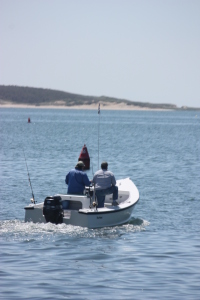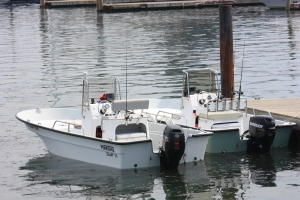A Boat for Every Budget
By Tom Keer
Oct 20, 2014
There is no shortage of boats that cost as much — if not more — than an average American home.
There is no shortage of boats that cost as much — if not more — than an average American home. Some of these are bucket list vessels that few of us will ultimately own. But there are boats for every budget. And some provide solutions to those of us looking for a first boat or one that frees up our budgets to buy more tackle. Here are a few points to consider when shopping for a boat, as well as information on manufacturers that specialize in them.
Finding a hull that will match your fishing experience is important. Modified or deep vee hulls are ideal for slicing through a chop while a flat bottomed work or jon boat skims the surface. Boats without liners are lighter and that means that smaller outboards are required to move them along. Boats that require simple bunk trailers also provide a great value, carrying a lower cost than those that require roller/bunk combinations, breaking systems, or dual tires.

Buying a pre-owned boat is also an option. There are usually a tremendous number of great options on the market. Time of year plays a significant role in the negotiated price, and fall is an excellent time to look for a pre-owned boat (many owners interested in selling their boats like to sell them from September through November so they don’t need to winterize or maintain them). New owners can find great values, and it’s a win-win situation.
There are a number of ways that innovative boat companies have created great entry-level boats. Eastern Boats, for example, worked off of a modified vee hull and added a shallow draft design. They increased the freeboard, created a composite molded inner liner, and rounded the chine. Their boats offer a smooth ride that handle good seas and can access skinny water.

Maritime Skiffs are another option that features a foam-filled, fiberglass grid that adds stiffness to the hull. The stiffness reduces the pounding associated with rough conditions and as the Skiffs don’t have a liner, their overall weight is reduced. As a result they can be powered with lower horsepower outboards.
Stur-Dee boats are short-to-moderate in length, varying between 10 and 16 feet. Their hulls have foam for floatation in their liners and hand-laid fiberglass hulls. The trim details of mahogany and teak dress up the boat without adding a tremendous amount to the cost.
Carolina Skiffs are flat-bottomed boats that feature wide beams and no liners. They’re fiberglass work boats that can run in four inches of water. And since they’re so simple, they run on low horsepower outboards.
So there really is a boat for every budget. And when you consider the fun that they provide their owners and crew, they are worth every penny.









